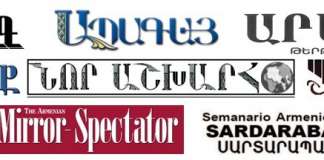Armenian Prime Minister Nikol Pashinyan has emphasized the imperative for practical steps based on mutually agreed-upon maps regarding the adjustment of territories, borders, as well as issues of enclaves and exclaves with Azerbaijan.
“Azerbaijan raises the issues of four villages, while the Republic of Armenia raises the issues of 32 villages, the vital territories of which have been occupied, including those in the region of Gegharkunik.
Given our commitment to recognizing each other’s territorial integrity on the basis of the Alma-Ata Declaration, we state that there should be no occupied territories between Armenia and Azerbaijan.
Therefore, if it is determined that Armenia controls territories that ‘de jure’ belong to Azerbaijan, Armenia will have to withdraw. Similarly, for territories that ‘de jure’ belong to Armenia but are currently controlled by Azerbaijan, Azerbaijan will have to withdraw,” PM Pashinyan said Saturday.
“This is the political agreement that has been recorded, but it is impossible to implement it practically without a mutually agreed map.
There is one way to adjust the territories: to politically base the maps expressing the provisions of the 1991 Alma-Ata Declaration, go to see the reality on the ground and match the realities to the maps.
“The opposite approach means creating a situation that will constantly lead to escalations, which can’t be a foundation for peace,” Pashinyan said.
He noted that Artsvashen has been under the occupation of Azerbaijan for 30 years.
“A political agreement has largely been reached that this issue should be addressed through a certain model. The same approach should be applied here, using mutually agreed-upon maps as the basis for accurately addressing the territory and the problem,” noted Pashinyan.















